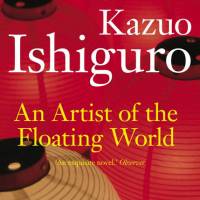Released in 1986, this relatively short novel is dense with ideas and possibilities. Set in Japan in the late 1940s, the story is narrated by Masuji Ono, a celebrated painter who once created propaganda for the Imperial Army. He now finds himself labeled a traitor by the younger generation, a reputation that threatens to derail his youngest daughter's forthcoming marriage.
An Artist of the Floating
World, by Kazuo Ishiguro
208 pages.
Faber & Faber, Fiction.
With Ishiguro, however, nothing is straightforward. Ono is an unreliable narrator, disguising his motives and spinning recollections to portray himself more favorably. Although he denies making mistakes, his true feelings slowly seep through and the evolution of his character is expertly revealed by the reactions of his worried daughters.
Ono does feel real guilt over his past, but he struggles to admit this — even to himself. His guilt tarnishes everything, turning the most innocent of comments into accusations. He lingers long over stories of those who choose to commit suicide to apologize for their mistakes.
"An Artist of the Floating World" is a sensitive examination of the turmoil in postwar Japan, a time when certainties were overturned, gender politics shifted, the hierarchy of the generations seemed to topple and even the geography of cities changed. All this is made more poignant when seen through the eyes of a man who is rejected by the future and who chooses to reject his own past.
Read archived reviews of Japanese classics at jtimes.jp/essential.



